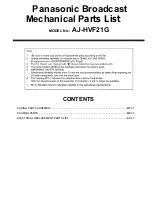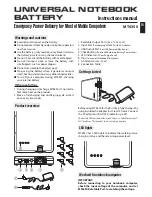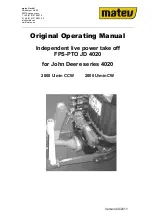
6
Open the photocells, pull-out the electronic circuit cards
(see
figure 6
).
Set-up a pair of photocells as MASTER
(
jumper
ID1
and
ID2
, see
figure 4).
WARNING: there must always be a single MASTER pair.
Set the other pairs of photocells as SLAVE (jumper
ID1
and
ID2
, see
figure 4
), all SLAVE pairs must have a different
configuration.
WARNING: It is essential to change the position of the
jumpers in the absence of voltage, since their configuration
is only detected upon ignition.
Connect the power supply, ensure the correct polarity.
WARNING: in case of AC power supply, connect all TX and
RX with the same polarity.
Connect all photocells with the synchronization wire
(SYNC).
If needed, connect the output terminals
OUT.
Figure 11
depicts a typical set-up of 4 photocell pairs:
2 pairs mounted at different heights on the outside of
the gate (PHOTO1 and PHOTO2) and 2 pairs mounted at
different heights inside the gate (PHOTO3 and PHOTO4).
Input
FT1
of the control unit is connected to the outputs of
PHOTO1 and PHOTO2 connected in series. Input
FT2
of the
control unit is connected to the outputs of PHOTO3 and
PHOTO4 connected in series.
Figure 12
depicts a typical set-up of 2 photocell pairs
(PHOTO1 and PHOTO2) a pair on the inside (PHOTO1)
and another outside the gate (PHOTO2). Input
FT1
of
the control unit is connected to the output of PHOTO1.
Input
FT2
of the control unit is connected to the output
of PHOTO2.
5.2
Assembly
Close the shells of the photocells by means of the two
screws supplied (detail
A, figure 6
).
Place the collar (detail
B, figure 6
).
The photocell can be install din 3 positions, by inserting
it in the 3 grooves of the column (detail
C, D, E, figure 7
).
The illustrations depict the installation in the front groove
(detail
D, figure 7
), which represent the most common
situation; as regards the side installation, the procedure
remains the same.
WARNING the cables have to pass through the appropriate
channel (detail
F, figure 7
).
Insert all collars, but do not tighten (detail
G, H, figure 8
).
5.3
Alignment
The alignment procedure is performed on one pair of
photocells at a time while observing the flashing of LED
L2
(on RX,
figure 1
), which represents the intensity of
the received signal: the flashing is faster if the signal is
stronger, is slower if it is weaker.
4
Terminals and signalling
Terminals for photocell TX (see
figure 1):
1
positive supply 24Vdc, phase A supply 24Vac
2
negative supply 24Vdc, phase B supply 24Vac
3 SYNC,
synchronism
LED for photocell TX signalling (see
figure 1):
L1
turned on when supply voltage is present, if it is off, this
means that the power supply is missing or incorrectly
connected
Terminals for photocell RX (see
figure 1):
1
positive supply 24Vdc, phase A supply 24Vac
2
negative supply 24Vdc, phase B supply 24Vac
3,4 OUT,
OUTPUT normally closed contact with
functioning photocells and without the presence of
obstacles between TX and RX
5 SYNC,
synchronism
LED for photocell RX signalling (see
figure 1):
L2
normally off; in “alignment” mode it indicates
the intensity of the received signal by varying the
frequency of flashing
L3
indicates the status of the output contact
OUT,
it is
normally turned on (contact closed), it turns off when
there is an obstacle between the photocells (contact
open)
5
Installation
CAUTION: Before proceeding with the installation of
the photocells, check the compatibility and technical
specifications of the control devices to which they will be
connected.
If the installation requires a distance between TX and RX
greater than 10 meters up to 15 metres, then the jumper
located on the rear of the circuit will have to be cut (see
figure 3)
. Carry out the operation as precisely as possible
without damaging the circuit.
CAUTION: If the installation requires a distance between TX
and RX of less than 2.5 meters, then the TX and RX lenses
must be removed; otherwise their proper functioning
cannot be guaranteed. Remove the lenses carefully, so as
not to damage the photodiodes or other components.
The minimum distance allowed is 80 centimetres.
Fix the TRIX columns by following the instructions given
along with it.
5.1
Wiring and configuration
WARNING: the cables must be long enough to reach the
top of the column and get to the photocells (see
Figure 5
).
WARNING: connect wires with the power turned off.
Arrange the cables: there are required 3 wires to connect
the TX and a maximum of 5 wires to connect an RX (the
number depends on how the output of the photocell is
connected).







































